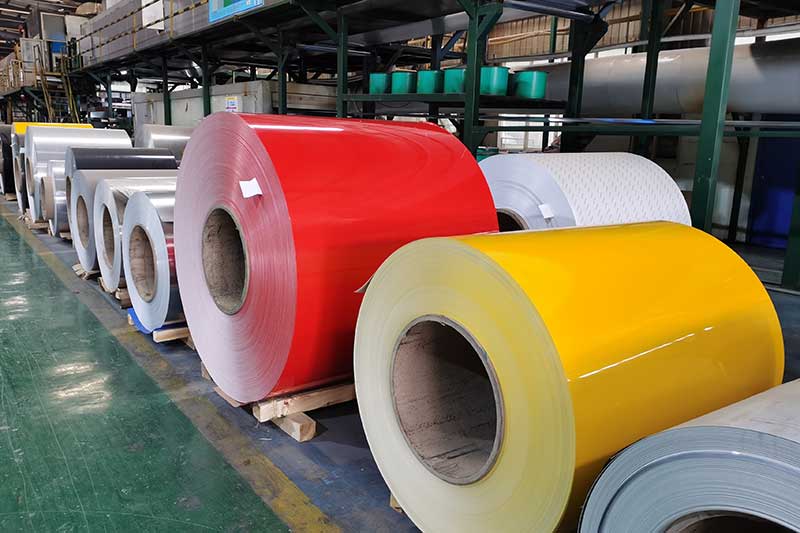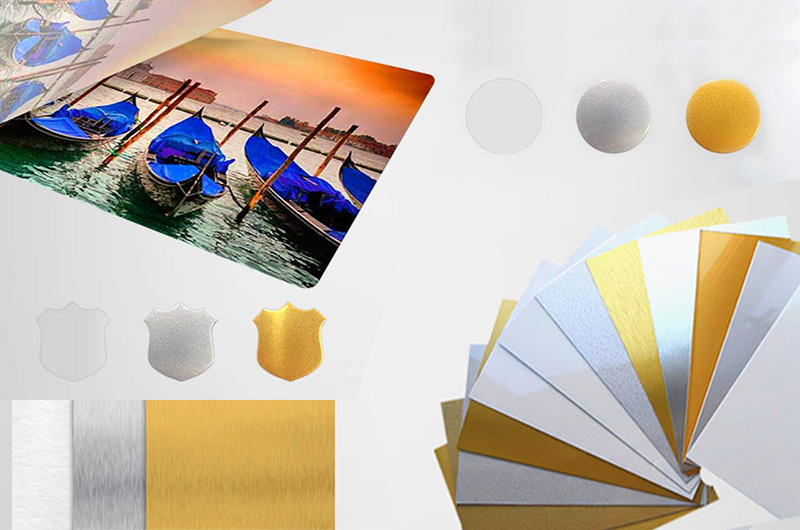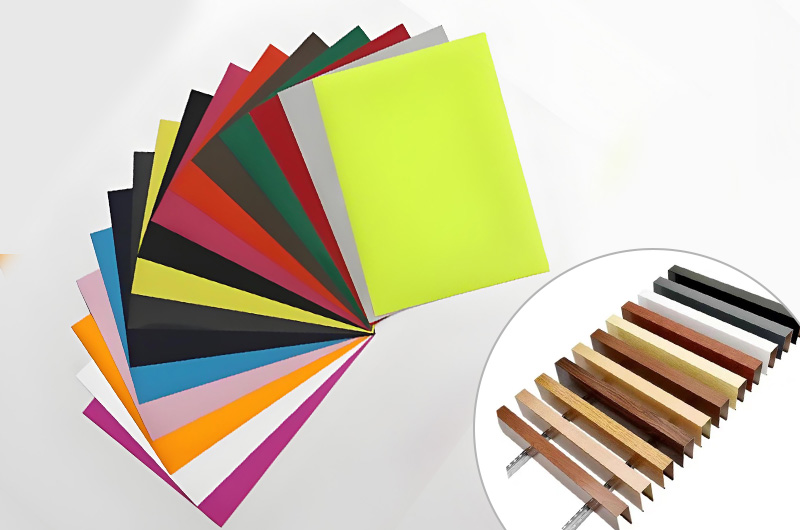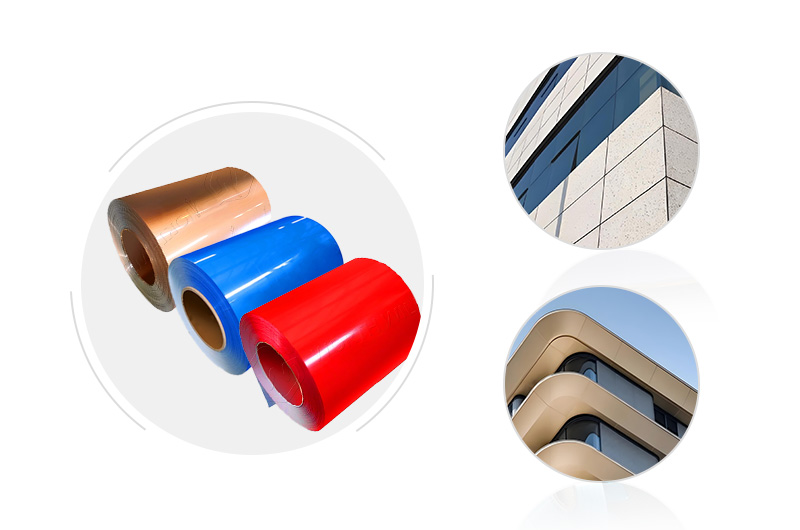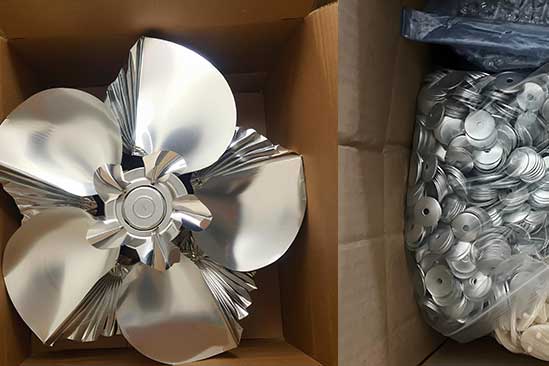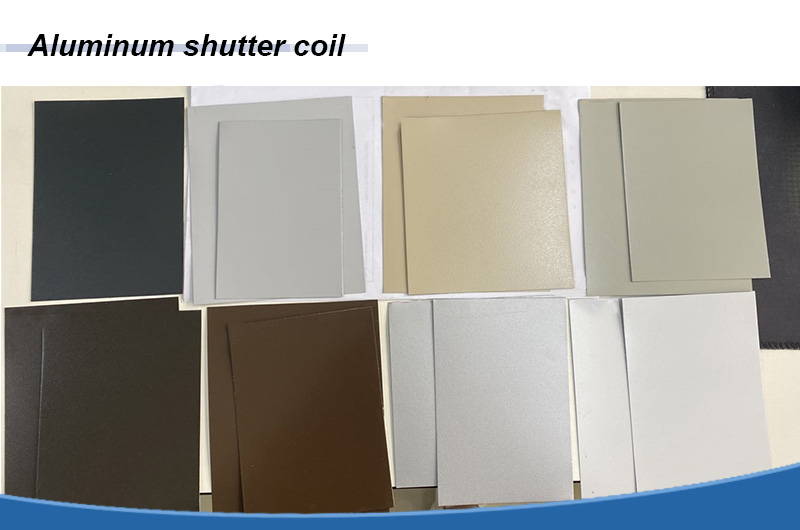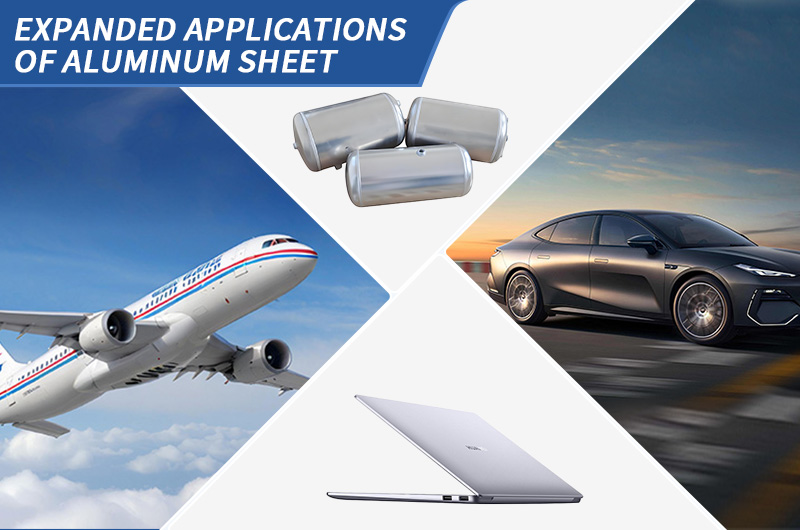The Difference Between Aluminum Sheet and Plate
The basic raw materials for both Aluminum Sheet and Plate are aluminum ingots. However, different alloying elements (such as copper, manganese, magnesium, silicon, and zinc) are added as needed to form specific grades of aluminum alloys.
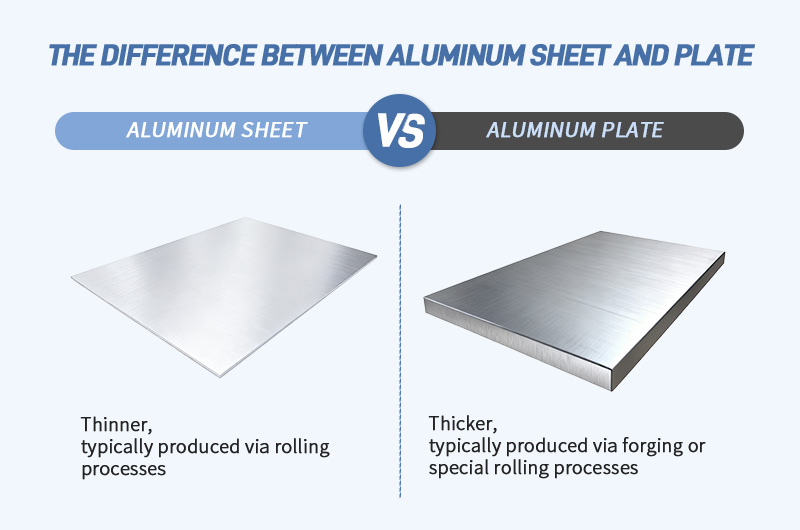
What is the Difference Between Aluminum Sheet and Plate?Simply put, the most fundamental difference lies in thickness.
- Aluminum Sheet: Thinner, typically produced via rolling processes, with a focus on surface quality and formability.
- Aluminum Plate (Heavy Plate/Thick Plate): Thicker, typically produced via forging or special rolling processes, with an emphasis on strength, toughness, and fatigue resistance.
Below is a detailed comparative analysis.
Core Difference: Thickness
This is the most basic and universal classification standard.
- Aluminum Sheet: Thickness usually ranges from 0.2mm to 6mm.
- Aluminum Plate: Thickness is usually greater than 6mm.
Industry Standard Reference: For example, ASTM B209 (U.S. standard) defines "sheet" and "plate" based on thickness, with the dividing line typically at 0.249 inches (approximately 6.32mm).
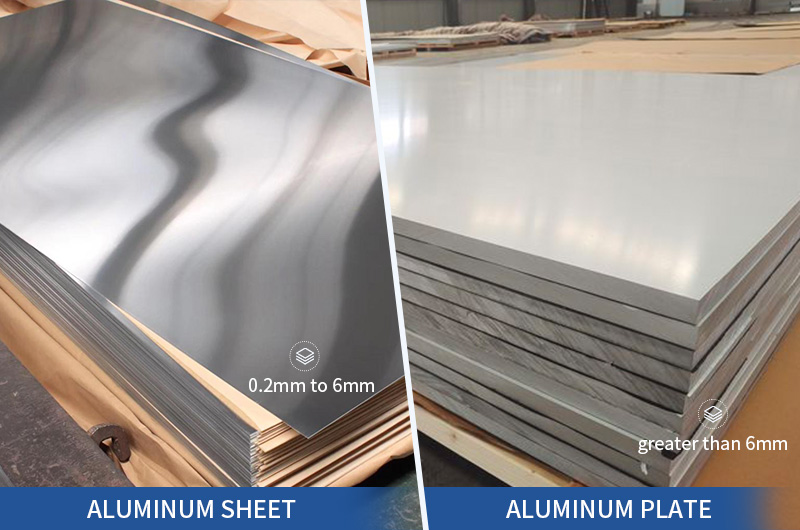
Different Production Processes
Common Starting Point: Casting
Molten aluminum alloy is poured into molds to cast thick aluminum ingots or slabs. This is the starting point for all aluminum processed materials.
Divergence: Rolling vs. Forging
For Aluminum Sheet
Hot Rolling: Aluminum ingots are heated to a high temperature (approximately 350–500°C) and passed through a series of large rolling mills to gradually reduce their thickness, resulting in thicker "hot-rolled sheets."
Cold Rolling: Hot-rolled sheets are further rolled at room temperature. This process makes the sheet thinner, improves dimensional accuracy, and creates a smoother surface. Cold rolling hardens the metal (work hardening), so intermediate annealing treatment is required to restore its plasticity for further processing. The final product undergoes finish rolling and surface treatment to become the common aluminum sheet we use.
For Aluminum Plate (Heavy Plate/Thick Plate)
Hot Rolling: The primary method for producing thick plates. Large aluminum slabs are directly rolled to the final required thickness using heavy-duty hot rolling mills.
Forging: For critical components requiring extremely high strength and uniformity (e.g., aircraft landing gears), forging is used. Heated aluminum slabs are forged into shape under immense pressure. This process eliminates internal pores and defects in the metal, densifies the grain structure, and achieves unparalleled mechanical properties.
Different Applications
Expanded Applications of Aluminum Sheet
- Transportation: Not only automobile bodies, but also the outer shells of train and subway cars, and luggage cases.
- Aerospace: Mainly used for aircraft skins (the outer covering of aircraft), which require light weight, thinness, and a flat surface.
- Construction & Decoration: Curtain walls, ceilings, partitions, and billboards.
- Packaging Industry: Beverage cans, food packaging foils, and pharmaceutical packaging.
- Home Appliances & Electronics: Outer shells of refrigerators and air conditioners, as well as housings for electronic products such as laptops and mobile phones.
Expanded Applications of Aluminum Plate
- Aerospace: Used for load-bearing structural components of aircraft, such as wing spars, landing gear bays, and fuselage frames—parts that need to withstand enormous loads and stresses.
- National Defense & Military: Armor plates for tanks and armored vehicles, and structural components for missiles and rockets.
- Marine Engineering: Decks and hull structural components of large ships, as well as offshore platforms.
- Energy Sector: Solar panel brackets, outer shells of large transformers, and LNG (liquefied natural gas) storage tanks.
- Heavy Machinery: Large structural components and wear-resistant parts of equipment such as excavators and bulldozers.
Comprehensive Comparison
To clearly illustrate the differences, a comparison table is provided below:
| Characteristic Dimension | Aluminum Sheet | Aluminum Plate (Heavy Plate/Thick Plate) |
| Thickness Range | 0.2 mm – 6 mm | > 6 mm |
| Main Production Processes | Cold Rolling, Hot Rolling | Hot Rolling, Forging |
| Mechanical Properties | Focus on Formability, Surface Smoothness | Focus on Strength, Toughness, Fatigue Resistance |
| Common Alloy Series | 1000, 3000, 5000, 6000 | 2000, 5000, 6000, 7000 |
| Subsequent Processing | Easy to stamp, bend, deep draw, weld | Suitable for machining, welding, and manufacturing large structural components |
| Surface Treatment | Smooth surface, suitable for anodization, spraying, electroplating | May have rolling marks; prioritizes internal quality over appearance |
Guide to Common Alloy Selection
The choice of alloy depends on the performance requirements of the specific application.
| Alloy Series | Main Alloying Elements | Key Properties | Common Product Forms | Typical Applications |
| 1000 | Pure aluminum (>99%) | High thermal/electrical conductivity, good corrosion resistance, excellent formability, low strength | Sheet, Foil | Electrical wires/cables, chemical equipment, decoration, packaging foil |
| 2000 | Copper (Cu) | High strength, good heat resistance, heat-treatable for strengthening | Plate, Sheet | Aerospace structural components, high-strength fasteners |
| 3000 | Manganese (Mn) | Medium strength, good formability and corrosion resistance | Sheet | Cookware, beverage can bodies, architectural decoration |
| 5000 | Magnesium (Mg) | High strength-to-weight ratio, excellent corrosion resistance, weldable | Sheet, Plate | Ships, automobiles, bridges, pressure vessels |
| 6000 | Magnesium + Silicon (Mg+Si) | Good formability and weldability, medium strength, heat-treatable for strengthening | Sheet, Plate | Architectural profiles, automotive structural components, electronic housings |
| 7000 | Zinc (Zn) | Highest strength, heat-treatable for strengthening | Plate | Critical aerospace structural components, sports equipment |
